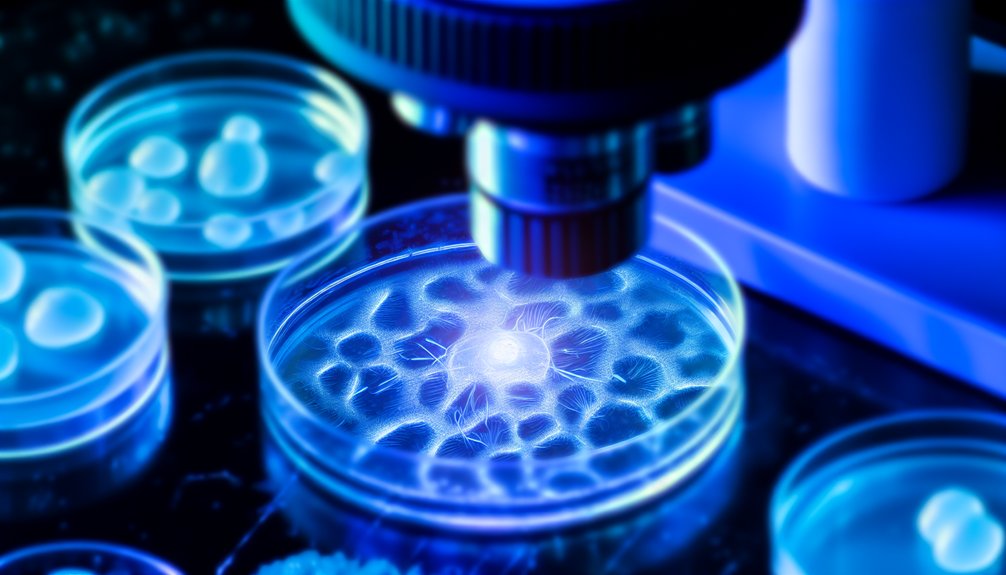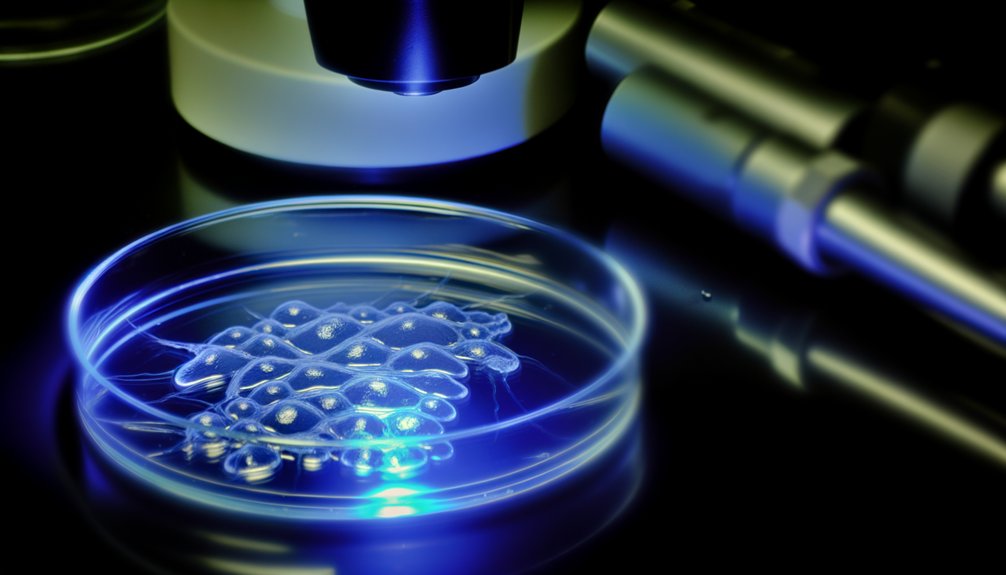Recent research shines a hopeful light on finding a cure for Type 1 Diabetes through amazing advancements in stem cell and beta cell therapies. Scientists are exploring the potential of stem cells to produce insulin and restore beta cell function. Some patients are even enjoying life without insulin, bringing tears of joy to their families. These breakthroughs are paving the way for a future filled with possibility and freedom. Discovering more about these incredible developments may inspire even greater hope.

In the quest for a potential cure for Type 1 Diabetes (T1D), hope shines brighter than ever. Recent advancements in stem cell therapy bring a sense of optimism that many thought unattainable. Imagine a world where individuals with T1D could produce their own insulin naturally, freeing them from the daily burden of injections.
Adult Mesenchymal Stem Cells (MSCs) have emerged as a promising candidate for this transformation. These cells can turn into insulin-producing beta cells, potentially providing a new source of therapy. Remarkably, MSCs possess immunomodulatory properties that might protect these beta cells from the autoimmune attacks that characterize T1D. Current research focuses on preserving or restoring beta cell function through various avenues, including immunotherapy and regenerative medicine. The lack of insulin leads to glucose accumulation in the blood, which highlights the urgency of finding effective treatments.
Clinical trials have shown that some patients experience improved glycemic control and reduced insulin dependence after MSC therapy. This gives families hope, as they envision a future where their loved ones can live with greater freedom and less anxiety. Vertex Pharmaceuticals is leading groundbreaking clinical trials with laboratory-grown beta cell transplants.
Meanwhile, researchers are also exploring induced pluripotent stem cells (iPSCs). By reprogramming a patient’s own cells, scientists can create custom-made islet cell clusters. A notable case from Beijing highlighted a patient who remained insulin-independent for over a year after receiving cells derived from her own iPSCs. The potential to bypass immune rejection is particularly exciting, as it could change the lives of countless individuals.
Further innovations include gene-editing technologies that allow transplanted islet cells to produce insulin without the need for risky immunosuppressive drugs. This could be a game-changer, making treatment safer and more acceptable.
Another fascinating approach involves reprogramming a patient’s fat cells into insulin-producing cells. This method is less invasive and has shown promising results, with some patients achieving independence from injected insulin within a year.
As researchers continue to explore these avenues, hope grows that a functional cure for T1D may soon be within reach, bringing joy and relief to families everywhere.
